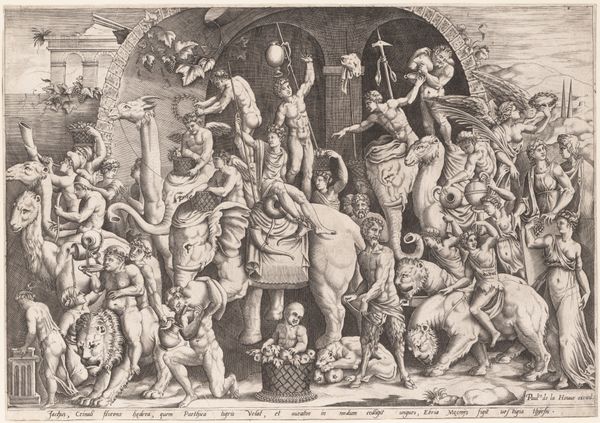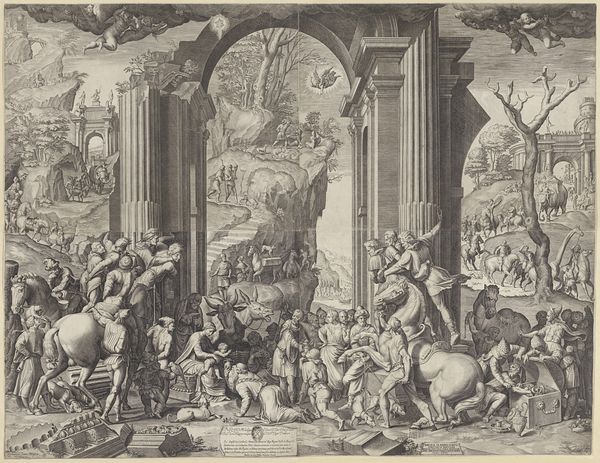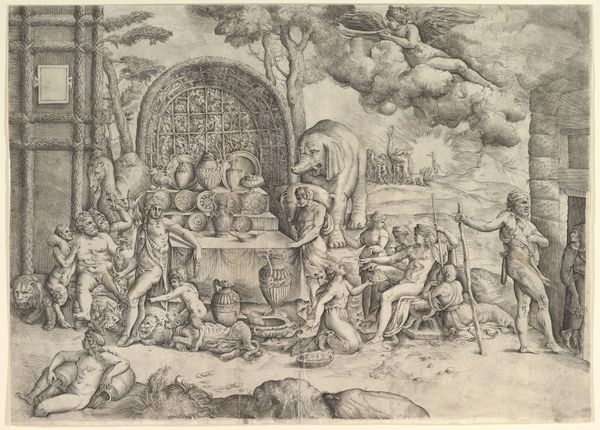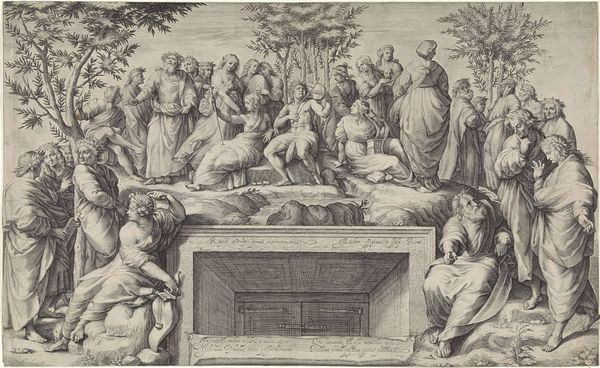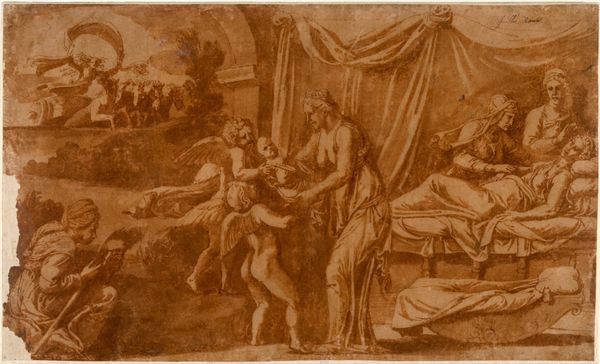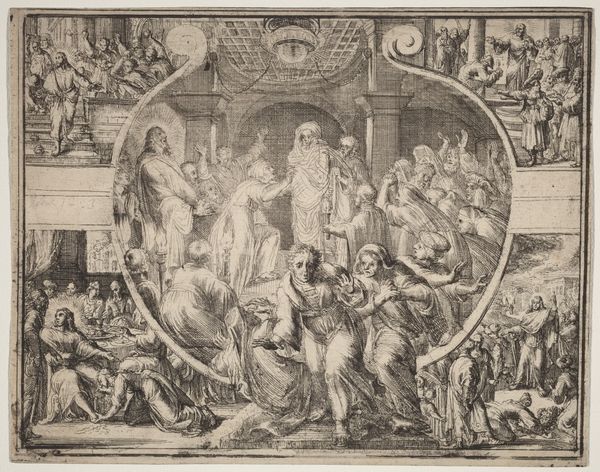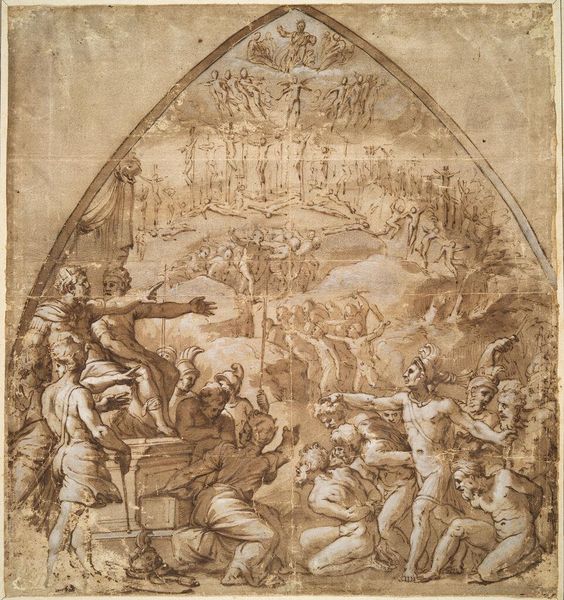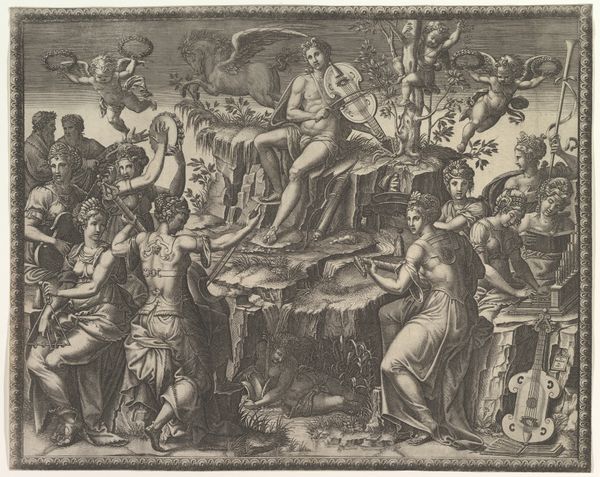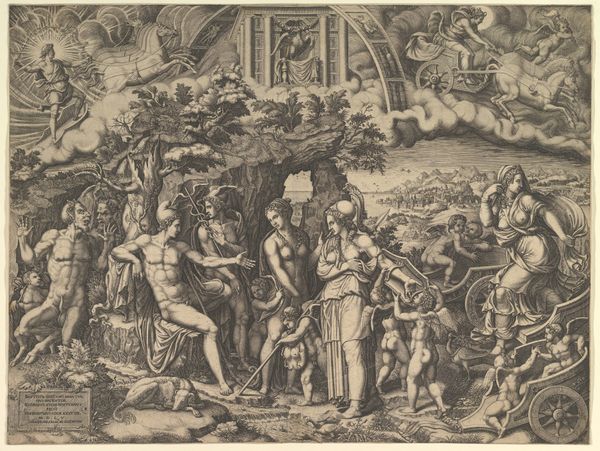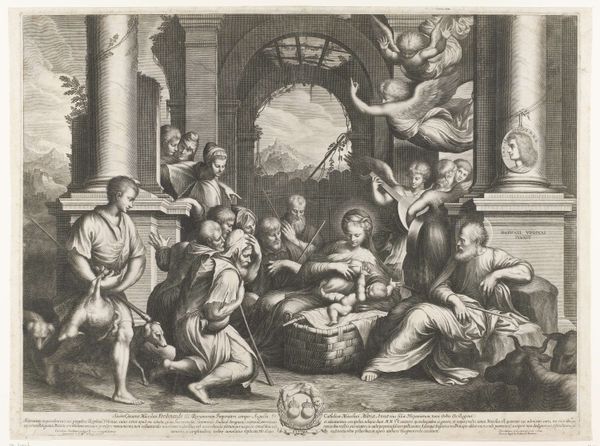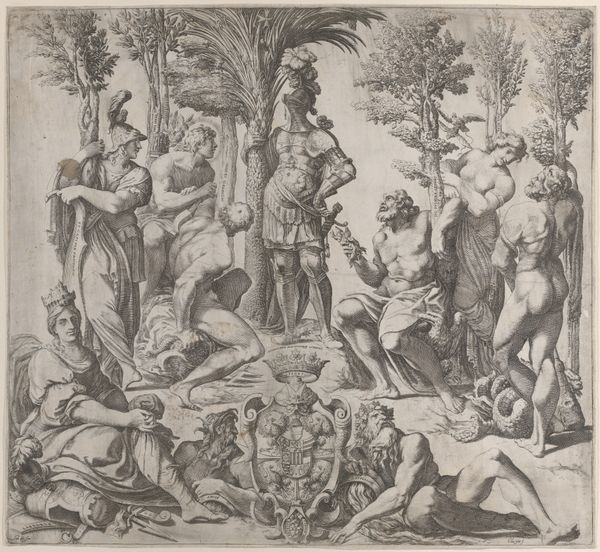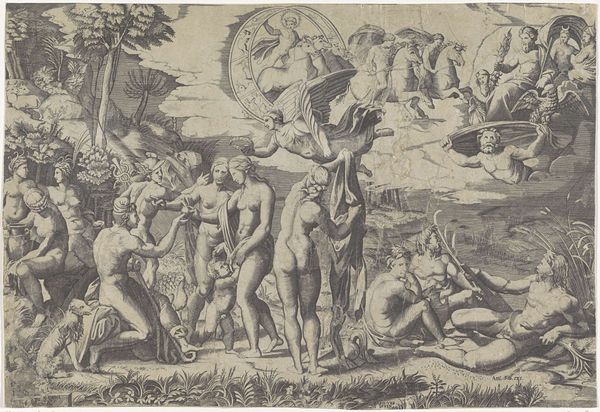
painting, oil-paint
#
portrait
#
allegory
#
baroque
#
painting
#
oil-paint
#
landscape
#
figuration
#
genre-painting
Dimensions: height 54.5 cm, width 74 cm
Copyright: Rijks Museum: Open Domain
Louis de Caullery painted "Venus, Bacchus, and Ceres with Mortals in a Garden of Love" with oil on panel in the early 17th century. It depicts an allegory of love and earthly delights in a formal garden. Let’s consider the painting’s cultural context. In the 17th century, the formal garden was a status symbol for the aristocracy, demonstrating wealth, power, and control over nature. De Caullery was a Flemish artist who was part of the court of Archduke Albert and Isabella in Brussels. The emphasis on courtly love and aristocratic leisure may have been designed to appeal to the tastes of his patrons. The classical figures of Venus, Bacchus, and Ceres suggest the influence of humanism and classical learning. How can we understand this artwork better? Art historians look at things like patronage records, estate inventories, and reception history to understand the place of art in the culture of the time. Art's meaning is contingent on its historical and institutional context.
Comments
No comments
Be the first to comment and join the conversation on the ultimate creative platform.
